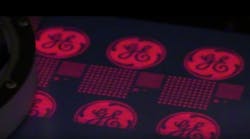A group of municipalities in the San Diego region of Southern California plan a mass upgrade of streetlights to more energy efficient LED or induction models. The City of San Diego, Port of San Diego, and upwards of 20 regional cities have partnered with San Diego Gas & Electric (SDG&E) to form the Street Light Working Group (SLWG) which is developing standards and tools for the municipalities to use in procurement and deployment of as many as 145,000 lights.
An advocacy group called CleanTECH San Diego is facilitating the SLWG. The group estimates that the project can ultimately save local taxpayers $10 million annually and lower carbon emissions by 40,000 tons each year. The SLWG is being guided by co-chairmen Marty Turock of CleanTECH and Tom Cartier, a project manager for the City of San Diego.
While most street lighting retrofit projects around the US and the world are purely focused on LED technology, the SLWG is pursuing both LED and induction technology. Turock said, "There is no simple one size fits all cookie cutter solution to street lighting."
Turock points out that no one, including the DOE and other lighting experts, has identified a single best solution to street lights. So when the SLWG was formed in the fall of 2009, Turock steered the organization on a technology-agnostic approach. Turock said, " Both technologies -- induction and LEDs -- can offer 30-40% energy efficiency improvements." So the SLWG is developing regional specification guidelines for both.
The San Diego region does offer a more diverse operating environment than many areas. Turock points out that you have cool moist air along the coast while the inland area has hot and desert-like conditions. But Turock is quick to point out that factors beyond the environment come into play. He notes that there are different performance and optical requirements based on whether the application is roadway or more decorative in nature such as lighting along pedestrian walkways. And even in the case of roadway lighting, the requirements vary for residential relative to highway applications.
Ultimately, each municipality in the SLWG will make its own decision between induction and LED lights. About the choice, Turock states, "LEDs provide superior photometric performance." The advantage isn't in brightness according to Turock, but in "better control of the dispersion of the light over an area."
Other potential factors include cost, warranty, lumen maintenance, and compatibility with adaptive controls and dimming. Turock doesn't see a lumen maintenance problem with either technology. He also expects both to work with adaptive controls, although that issue is under study. Chula Vista, one of the cities active in the SLWG, is conducting a study on the control issue right now.
According to Turock, warranty is emerging as a primary decision point. Municipalities would prefer a technology that lasts 10-20 years. Turock points out that high-pressure-sodium (HPS) lights have been installed for as long as 30 years, although bulbs certainly require regular replacement. Turock said, "All of the induction manufacturers will warrant their fixtures for ten years. With LEDs, I haven't seen any greater than five."
The cost issue is a volatile one although induction lights are generally cheaper. The good news is that prices are coming down. Turock said, "Even in the past year both LED and induction prices have come down on the order of 25-30%." The price drop may in part be due to maturation of the technologies but surely the impact of street light deployments around the globe is driving production volume up thereby helping to bring prices down.
In the San Diego region, the municipalities appear to be headed in different directions on the choice between LED and induction technologies. The City of San Diego is focused primarily on induction lights, and according to Turock warranty is a major reason.
Chula Vista is more focused on the LED option although somewhat ironically has a 4600 street-light retrofit underway with induction luminaires. Robert LeClair of the Chula Vista public works department has stated that LEDs offer superior performance, but economic reasons dictated the induction choice for the current project.
A $2 million low-interest loan from the California Energy Commission is funding the project. According to Turock, the Commission required that a project have a 10-year, or faster, payback window as a condition of the loan. Because SDG&E did not offer a tiered rate structure that could make a 10-year payback happen, the city went with induction technology. Some utilities do provide a lower-rate tier for various energy-saving initiatives including new lighting
Turock points out that most of the project that's underway in Chula Vista is in residential areas where the performance requirements for street lights are lower than for highway applications. And Chula Vista is planning to use LEDs in future projects.
Turock and the SLWG have essentially formed an organizations that's very much like a smaller version of the DOE Municipal Solid-State Street Lighting Consortium announced earlier this year. When asked about that characterization, Turock said, "Bingo." In fact Turock and Cartier have applied for membership in the DOE consortium and Cartier has nominated Turock for a position on the executive committee.
According to Turock, the SLWG has "the mission of accelerating adoption of best practices and sustainablilty across the San Diego region for the betterment of the environment and the betterment of the local economy." The group has developed regional specification guildelines and procurement document templates for LED and induction cobra-head street lights. The goal according to Turock is that, "any of the municipalities in our region would have tools available to them based on their application-specific requirements to go forward and accelerate those procurements."
The SLWG has biweekly meetings and according to Turock 11 cities in the region participate regularly along with the Port of San Diego and even UCSD (university of California at San Diego). The other 7 cities in San Diego County and 3 cities in southern Orange County that are in the SDG&E service area also participate in some meetings.
The SLWG has leverage the work done by the City of San Diego in induction technology and Chula Vista in LED technology to develop its guidelines. Turock said, "You have to identify a lead city that is going to do it whether there is a consortium or not." The SLWG was able to tweak and generalize specifications developed by the lead cities in the two different technologies. "I'd say on average we're providing 85-90% of what the individual cities need. They can start with that and tweak it to however their purchasing or legal departments require their RFPs to be conducted," said Turock.
"I think one of the key reasons that our collaborative approach has worked here is because we have been technology neutral, we developed tools for both LEDS and induction options," said Turock. Going forward the group will leverage the same methodologies to address acorn-style decorative lighting and perhaps parking-area lighting.
Summarizing his thoughts on the technology options, Turock said, "Clearly LED will become a predominant lighting technology." In the street light-area he noted that everyone is watching Los Angeles since that city has embarked on the largest LED street-light project in the world with the potential of 140,000 lights. The City of San Diego has 13,000 induction lights on order according to Turock and he expects another 10,000 unit order soon. With street lighting accounting for somewhere around 20% of the electricity spent by a typical municipality, it has became one of the projects all cities across the country will pursue.




